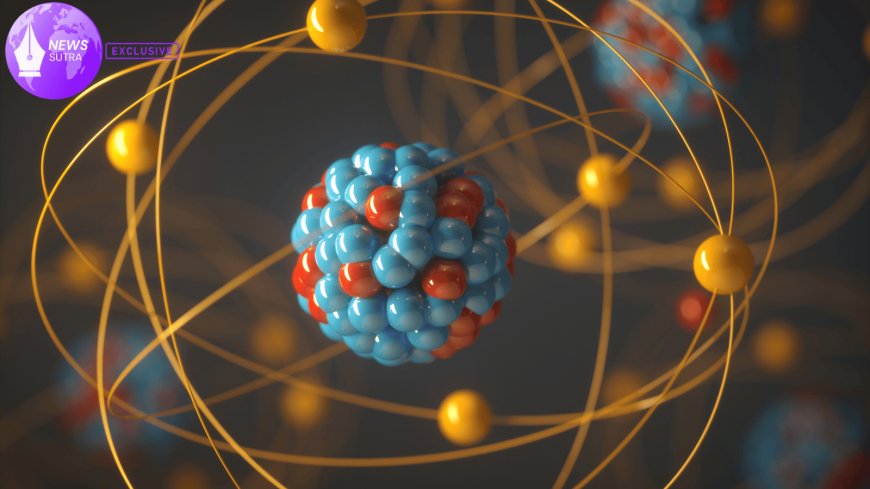America’s Fusion Energy Gamble: Can Physics Unlock Unlimited Clean Power by 2035?
The U.S. is betting big on nuclear fusion, from national labs to private startups. Can physics deliver limitless clean power by 2035?

For decades, nuclear fusion has been called the holy grail of energy — a limitless, carbon-free power source that mimics the physics of the sun. Now, the United States is making one of its boldest bets yet: that fusion could move from theory to reality by 2035, fundamentally reshaping the nation’s energy system.
But can physics really deliver unlimited clean power in just over a decade? The answer depends on a mix of government research labs, international collaborations, and a wave of American startups racing to commercialize a technology once considered science fiction.
The Promise of Fusion: Power Like the Sun
Unlike nuclear fission, which splits atoms and produces long-lived radioactive waste, fusion joins hydrogen isotopes to release enormous energy with minimal waste. In theory, a small glass of seawater could generate enough energy to power a home for hundreds of years.
The physics is well understood. The challenge lies in controlling plasma at temperatures exceeding 100 million degrees Celsius — hotter than the sun’s core — long enough to generate more energy than consumed.
America’s Big Moment: The NIF Breakthrough
In December 2022, scientists at the National Ignition Facility (NIF) in California achieved a milestone: producing more energy from a fusion reaction than the lasers used to ignite it. The experiment marked the first-ever demonstration of net energy gain in a controlled fusion reaction.
This result electrified the scientific community. It proved that, at least in principle, fusion could cross the barrier from theory to applied physics. Yet, critics point out that the experiment involved only a fraction of what would be needed to build a functioning power plant. Scaling remains the ultimate hurdle.
ITER and Global Collaboration
Alongside domestic progress, the U.S. is a partner in ITER, the massive international fusion reactor under construction in southern France. ITER uses a tokamak design — a doughnut-shaped magnetic chamber designed to confine plasma.
If successful, ITER will be the largest fusion experiment in history. But construction delays and rising costs have pushed its timeline back repeatedly. Current estimates suggest ITER won’t achieve full-scale fusion tests until the early 2030s.
For Washington policymakers, this underscores the urgency of pursuing parallel paths at home rather than waiting for international breakthroughs.
Private Startups: America’s Fusion Wildcard
While national labs and global collaborations make headlines, the most rapid innovation may be coming from U.S. startups. More than 30 private companies, backed by billions in venture capital, are racing to build commercial reactors.
Some leading players include:
-
Commonwealth Fusion Systems (CFS): A spinoff from MIT, using powerful superconducting magnets to shrink reactor size.
-
TAE Technologies: Exploring alternative plasma configurations to reduce cost.
-
Helion Energy: Promising to deliver fusion electricity to the grid by the early 2030s.
According to the Fusion Industry Association, private investment in fusion surpassed $6 billion as of 2024, with the majority flowing into American companies.
Challenges on the Road to 2035
Despite optimism, experts caution that fusion is still an engineering challenge as much as a physics problem. Key obstacles include:
-
Energy Scaling: Moving from lab-scale experiments to reactors capable of continuous operation.
-
Materials Science: Developing walls and magnets that can withstand extreme heat and neutron bombardment.
-
Cost Barriers: Building reactors that can compete with renewables like solar and wind.
-
Grid Integration: Ensuring fusion plants can deliver consistent, dispatchable electricity into the U.S. grid.
As one senior physicist at Princeton Plasma Physics Laboratory put it: “We’ve shown fusion can work — now we have to prove it can work economically.”
Why 2035 Matters
The year 2035 isn’t arbitrary. President Biden has set a national goal of 100% clean electricity by 2035, positioning fusion as a potential breakthrough alongside renewables, storage, and nuclear fission.
If fusion can deliver on its promise within this timeframe, it could transform America’s energy mix and global climate strategy. If not, it risks becoming another ambitious technology that remains perpetually “just 20 years away.”
Skeptics vs. Believers
Skeptics argue that fusion’s timeline is unrealistic, pointing out that even the most advanced startups have yet to run a sustained power-producing reactor. They warn that overpromising could undermine public trust in clean energy.
Believers, however, see a convergence of physics breakthroughs, private funding, and political urgency as a once-in-a-generation opportunity. With both NIF’s ignition success and private reactor prototypes accelerating, they argue the next decade could finally deliver what 70 years of research has promised.
Conclusion: Betting on the Physics of the Future
The U.S. is taking a calculated gamble. On one side are the national labs and ITER, pursuing large-scale, government-backed science. On the other side are agile startups experimenting with bold new designs. Together, they form a high-stakes bet that by 2035, nuclear fusion will move from an experimental achievement to a cornerstone of the American energy grid.
Whether fusion succeeds on that timeline or not, the pursuit itself reflects a broader truth: America cannot afford to stop pushing the boundaries of physics if it hopes to lead the clean energy future.
What's Your Reaction?
 Like
0
Like
0
 Dislike
0
Dislike
0
 Love
0
Love
0
 Funny
0
Funny
0
 Angry
0
Angry
0
 Sad
0
Sad
0
 Wow
0
Wow
0








































































